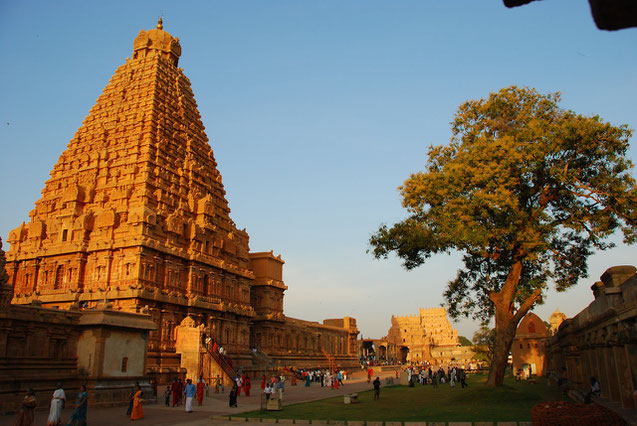India 2012 - Thanjavur
Brihadishvara Temple
Brihadishvara Temple is one of the largest Hindu temple in India. It is dedicated to Lord Shiva and was built around 1010 in the Chola period during the reign of
the Chola monarch Raja Raja I (kings of kings I).
It is the most important of the three Hindu temples known as "The Great Living Chola Temples", a UNESO World Heritage site since 1987 (Brihadishvara) and 2004 (temples of Gangaikonda and Airavatesvara).

The Chola dynasty ruled large parts of South India from 300BCE until 13th century CE. At the height of their power starting 900BCE their influence also covering the North East of India, parts of Sri Lanka and at times parts of Malaysia and Indonesia.
At Brihadishvara Temple the temple tower of the inner sanctum has a height of 30m, heigher than the gopuram at the entrance, what makes it unique. The bulbous structure at the top alone has an estimated weight of 80 tons. The whole building is made of granite, quarried some 60km away. Even today it is not quite clear how they managed to put that bulb of massive granite on top.
Most impressive is the Nandi (sacred bull of Shiva) seated in a covered structure opposite the inner sanctum. The Nandi is made from a single block of granite about 5,5m long and 4m heigh, weighing 25 tons. The Nandi statue is one of the biggest in India. In Hindu mythology Nandi is the mount of the god Shiva and is also the gatekeeper to the residence of Shiva and his wife Parvati. That is why a Nandi statue is often placed next to the entrance of a temple dedicated to Lord Shiva or opposite the inner sanctum.
Maratha Palace

The Royal Palace at Thanjavur was the seat of the ruling Bhonsle family 1674 until 1855.
Only the Durbar Hall and the Raja Serfoji Memorial Hall give an impression of how it must have looked like in the past.
Today the palace also houses a small art gallery and the Saraswathi Mahal Library.
The complete skeleton of a whale inside the palace comes a bit unexpected.

































